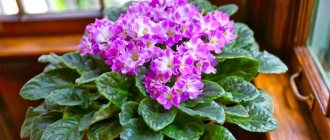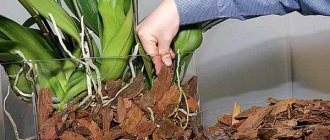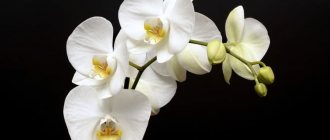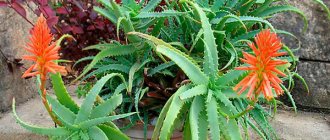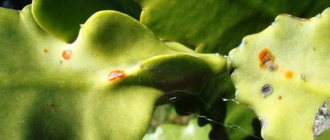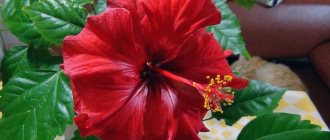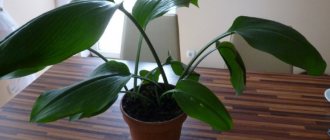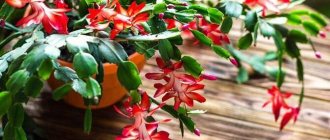Spectacular, delicate, airy, inimitable - these are the epithets that come to mind when I admire the flowering of clerodendrum. He has been living with me for 4 years, but I just can’t get used to this miracle. A neighbor gave the flower when she moved. She didn’t tell me anything about him, assuring me that I would figure it out myself. I started looking for information and learned a lot of interesting things. In particular, there is a very beautiful legend associated with the flower, and it does not bloom in every home. I hasten to share with you the features of caring for the “tree of destiny”.
Why doesn't clerodendrum bloom?
Why does clerodendrum not bloom?
Many flower growers believe that this flower has good energy and brings feminine happiness to the home. The green beauty is a lover of the warmth of the African and American tropics. There its vines reach up to 4 m in length, green leaves cover the entire length of the shoots every year, falling off during cold weather. The shoots become woody, which allows this plant to be grown as a tree or bush.
Flowering of a contrasting beauty
Flowering occurs from the beginning of spring until the first days of autumn. At home, you can most often find Mrs. Thompson's clerodendrum and Clerodendrum Prospero. For the Thomson and Clerodendrum Prospero species, home care is the same, they differ only in shape and color palette.
If left long, the plant may pull its shoots upward, requiring garter, or fall down from the hanging pot
The conditions for keeping the evergreen representative of the Verbenov family are simple. The lack of flowering is associated precisely with insufficient care. Main reasons:
- improper care during plant hibernation;
- improper exit from a state of rest;
- lack of fertilizing or untimely replacement of soil;
- incorrect pruning.
How Thomson's clerodendrum with red stamens and snow-white Prospero bloom
Briefly about the plant
Clerodendrum is a green vine with beautiful weaving. Translated, the flower means “tree of fate.” People may call it “innocent love.”
Clerodendrum Thomson.
The homeland of the liana can be called Africa and Asia. The leaves of the plant are shaped like a heart, the inflorescences have the appearance of a panicle. There are many types of this flower in nature, and each of them has its own exceptional and amazing aroma.
Difficulties in home care
Why do dracaena leaves turn yellow and fall off?
You should take special care of your phytofriend during periods of dormancy and recovery from it. With the onset of winter, it should be placed in a place where the temperature will be about 15 °C. Watering should be reduced to a minimum, but make sure that the soil in the pot does not dry out completely.
Important! In winter, you cannot spray, fertilize, or place the plant in a warm place.
Since watering is reduced, many gardeners forget about their indoor friend and may miss the appearance of the first buds of flower stalks. With their pipping, the active period of caring for the plant should begin, this is approximately the end of February - beginning of March:
- Mandatory pruning. The length of the shoots should be reduced by one third. If long lashes are formed, you need to remove a minimum of length; if you want to create a tree, you can leave 10 cm of shoots. The smaller the shoots of the plant, the larger and denser its flowers will be.
- Replanting or updating the top layer of soil. The flower slept in winter, and during the active period of growth it needs a lot of nutrients, which should be in its soil. Replanting is not necessary if the plant's roots have not reached the bottom of the pot.
- After transplanting and pruning, it is important to provide the clerodendrum with warmth and plenty of light.
- In conditions of awakening, the flower needs daily watering with the obligatory removal of excess water from the pan.
An example of how to prune clerodendrum correctly
Growing problems
Clerodendrum is not afraid of diseases - it is resistant to most fungi, viruses and infections. Common houseplant pests such as aphids, spider mites and whiteflies can be dangerous. If insects are detected in a timely manner, a single treatment with an insecticide will help.
Much more often you have to deal with the consequences of poor, neglected care. The main problems, their causes and solutions are listed in the table below.
Table - Problems when growing clerodendrum
| Problem | Probable Causes | Help the plant |
| Yellowing of leaves | — Lack of moisture in the soil; — Dry air in the house; — Too much fertilizer; - Lack of light; — Direct sunlight | — Regular watering; — Systematic watering; — Adjustment of care in accordance with recommendations |
| The leaves wither and fall | — Severe drying of the soil | — Maintain constant soil moisture |
| The leaves turn black | — Fertilizers burn roots — Root rot | — Replant by removing damaged roots |
| The plant sheds leaves and buds in summer | - Humidity; — Lack of water; — Low air humidity; — Lack of nutrients | — Regular spraying with warm water; — Regular fertilization with mineral and organic fertilizers |
| Leaf chlorosis (leaf wrinkling, curling, spots) | — Micronutrient deficiency | — Spraying with iron fertilizers |
| The shoots stretch out, the leaves wither. | — Light fasting | — Move the plant closer to the window; — Increase the amount of light |
| Spots appear on the leaves | - Sunburn; — Pests; - Cold air; - fungus | — Check for pests and plaque; — Move to a warm place, protected from the sun |
Since Thompson Clerodendrum is quite easy to care for, it can be used to decorate offices. It looks very impressive in large, well-lit rooms.
Transfer
Why do cyclamen leaves turn yellow when it blooms?
It needs replanting annually, since the root system is very developed and grows quickly. More often than not, it looks more like a transshipment than a transfer. The roots of the plant are very delicate, it is better not to touch them.
Note! You cannot remove the roots too much from the soil, as you can damage them, which can also cause a lack of flowering.
The flower is picky about soil: it needs nutritious, slightly acidic soil. To create these conditions, you need to mix in equal parts:
- clay soil;
- leaf soil;
- peat;
- coarse sand.
Note! Before transplanting, the soil is disinfected with steam or in the oven.
Conditions for lush flowering
Why do indoor balsam leaves turn yellow?
Flower growers, wondering why their Thompson clerodendrum does not bloom, attribute capriciousness and a difficult character to the plant. And it just requires similar conditions to its native home: light, warmth, humidity and abundant watering that does not linger in the roots.
- It will not be difficult to provide it with light; it feels great on a western or eastern window, the main thing is diffused lighting. During the winter dormant period, it does not need abundant light. But when emerging from hibernation, a lack of light can cause flower buds to fall off.
- The temperature in summer should be 20-25 °C. During the rest period, the temperature should not exceed 18 °C, ideally 12 °C.
- High humidity should be maintained by frequent spraying and a damp layer of expanded clay in the base of the pot. When spraying, it is important that water does not fall on the inflorescences.
- Abundant watering begins in early spring after pruning and replanting the plant. With the onset of the dormant period, along with a sharp drop in temperature, watering is also reduced.
- Complex fertilizer for flowering plants will provide all the necessary minerals and trace elements during active flowering and growth.
Important! There is no need to fertilize during the autumn and winter periods, since the plant can go into active growth and skip the period of sleep, and with it the formation of buds with future flowers.
Clerodendrum: how to make it bloom
There is one secret what to do to make indoor clerodendrum bloom. There is one sure way to provoke flowering - pruning.
The first buds to appear on the plant are the flower buds, and then the leaf buds. If the plant does not produce them on its own in early March, the plant should be pruned. Pruning must be done sparingly, the shorter the better. After the procedure, the plant should be transplanted into fertile soil. With this method of breaking dormancy, leaf buds first appear and its large green leaves begin to open, followed by active growth of flower buds.
Why do clerodendrum leaves turn yellow and fall off?
Why do clerodendrum leaves turn yellow, and what to do in this case:
- During the spring and summer periods, the leaves will turn yellow with poor watering. It should be made plentiful.
- If the leaf blade does not turn completely yellow, but only yellow dots appear, the problem is not watering. This is a sign of the disease chlorosis. The plant lacks iron in the soil and fertilizing; you need to add this element to restore color. Sometimes chlorosis occurs when there is a sharp change in temperature at different times of the day.
- If the leaves of clerodendrum lighten and fall off at the beginning of autumn or the dormant period, this is a normal phenomenon for clerodendrum. It prepares for winter and reserves strength, so it allows the foliage to turn yellow and fall off.
Lack of care leads to loss of healthy appearance
Pests
A plant infected with whiteflies can be recognized by small light spots on the leaves, their yellowing and falling off. Small insects fly up in swarms from a disturbed plant. To destroy them, the bush is sprayed with a soap solution, garlic water, tobacco or dandelion infusion. If there are too many insects, insecticide preparations “Aktellik”, “Tanrek”, “Zeta” help. When infected with mealybugs, a fluffy white coating in the form of cotton wool appears on the leaves and shoots. Affected plants develop poorly. They can be removed by treating the bushes with a soap-alcohol solution. An infusion of cyclamen tubers, tobacco, and dandelion also helps well.
Spider mites are very small arthropods, invisible to the naked eye. A thin web on the leaves indicates infection by them. They die and become covered with cracks. Flower growth stops. To combat spider mites, acaricidal preparations are suitable. Increasing the humidity also helps.
When infested with aphids, the foliage becomes covered with sticky insect secretions, becomes deformed and curls. Insects settle in large colonies on the back side of leaf blades. At the initial stage of infection, traditional methods help: treatment with soap solution, wormwood decoction, tobacco or dandelion infusion. If they do not help, the bush is treated with insecticides “Aktellik”, “Decis”, “Fitoverm”.
Scale insects and false scale insects on the leaves look like small round yellowish spots. They feed on plant juices and cause foliage to wither and dry out. Visible insects are removed by wiping the leaves with turpentine and treating them with a soap solution. Then the bush is sprayed with Fitoverm, Fufanon, and Actellik.
Clerodendrum: proper pruning
Pruning is an important procedure for this flowering plant friend. It is on young shoots that good flowers form. To provoke the growth of young shoots, you need to cut off the old ones. The shoots should be shortened by at least 1/3 of the length.
Using pruning, you can form a tree, bush or long vines that will entwine the support
Even though clerodendrum requires attention at the beginning of spring, it rewards this care with beautiful flowering. Its flowers look bright and festive and exude a honey aroma. This is a worthy decoration for any home.
Reproduction
To get a new plant, you can use two methods of propagation:
- cuttings;
- seeds.
For the seed propagation method, it is necessary in early spring to prepare a small container with nutritious soil consisting of peat and sand, and place the seed material on its surface. The soil in the container must be moistened generously with a spray bottle and covered with plastic wrap to create a greenhouse effect. Planting containers should be placed in a warm and well-lit room. Young gardeners should not forget to regularly ventilate the container and moisten the soil.
Cuttings are the most popular and easiest way to obtain a new plant. To implement it, you need to place the cut shoots in water, to which you can add a root system growth accelerator. After the last formation, the petioles can be rooted in small technical containers, the diameter of which should not be less than 60 mm.

